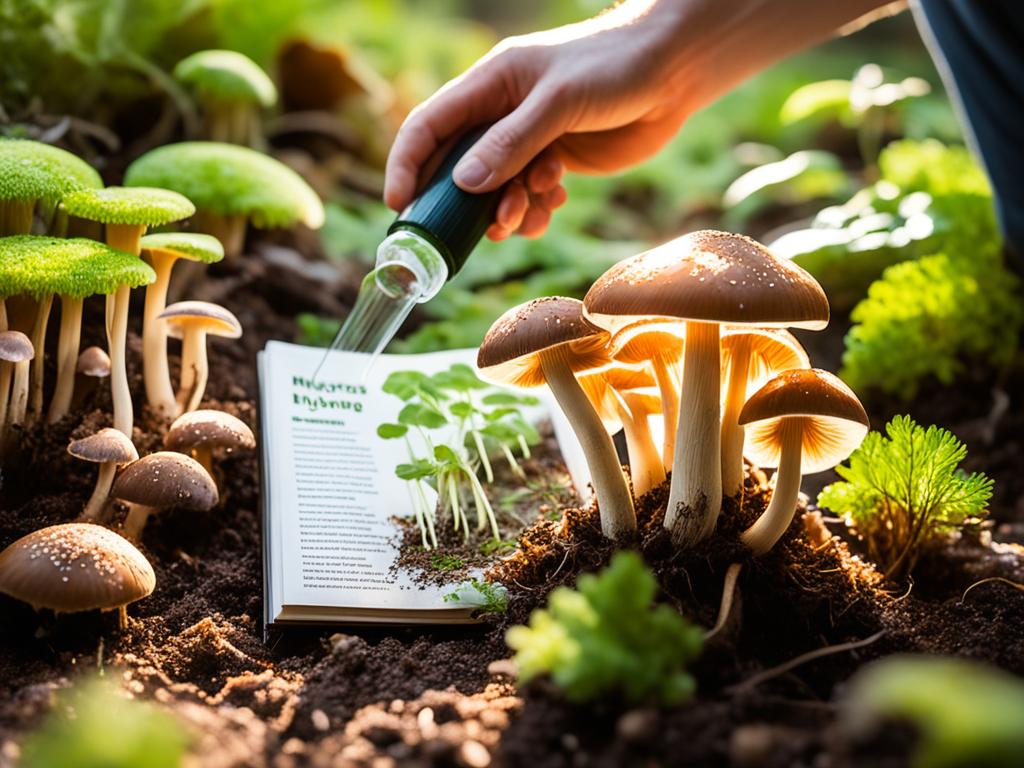Growing mushrooms from mushrooms is a fun and rewarding hobby for beginners. This guide will show you the key steps, from getting the right gear to successfully growing your mushrooms. You’ll learn how to grow oysters, lion’s mane, or shiitakes at home.
We’ll start with soaking the popcorn and end with harvesting. I’ll share the best ways to get a lot of mushrooms. We’ll also talk about common problems like contamination and how to fix them. Let’s start our journey into mushroom growing, step by step.
Gathering Essential Equipment
The first step in growing mushrooms is to gather the right gear. A pressure cooker is key for sterilizing your substrate. This kills off other microorganisms. Make sure your pressure cooker can hit at least 15 psi for good sterilization.
You’ll also need wide-mouth jars for easy inoculation. Don’t forget polyfill for air exchange, scotch tape, a drill, latex gloves, rubbing alcohol, a lighter, and aluminum foil. These tools help prepare your substrate and spread mushroom spores in the jars.
Sterile Working Environment
Keeping your work area sterile is vital to avoid contamination. A still air box helps by cutting down on airborne germs. It boosts your chances of a good mushroom cultivation outcome. Always sanitize your tools and hands during the process.
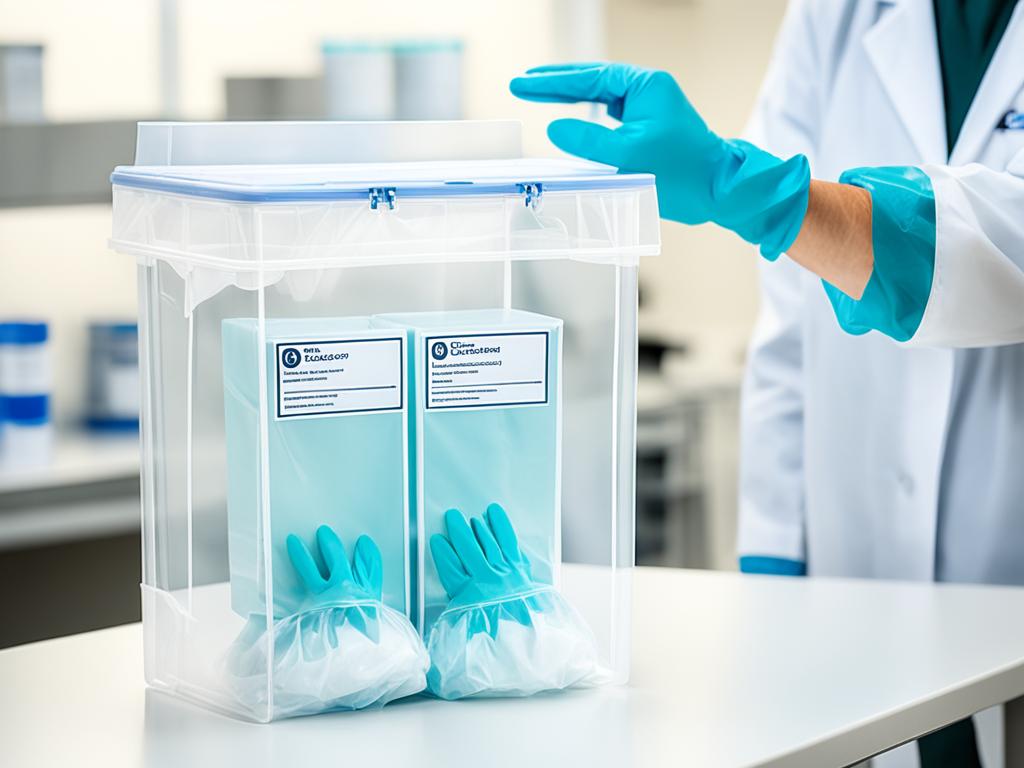
“95% of mushroom growers recommend using essential equipment to ensure a successful harvest.”
Preparing the Substrate
Growing mushrooms at home starts with a well-prepared substrate. The “popcorn tek” is a simple and effective method. It involves soaking and cooking popcorn kernels to make a perfect medium for mushrooms.
Soaking and Cooking the Popcorn
Begin by soaking two bags of popcorn in water for 24 hours. This softens the kernels for the next step. Then, cook the popcorn for about 40 minutes. You want the kernels to be partially cooked but not too wet. They will be the substrate for your mushrooms.
Filling and Sterilizing the Jars
Fill the wide-mouth jars with the prepared popcorn, leaving about two-thirds empty. Cover the jars with aluminum foil and pressure cook them at 15 psi for 50 minutes. This sterilizes the substrate and kills off any unwanted organisms. Let the jars cool down before you start the inoculation. High heat can harm the spores.
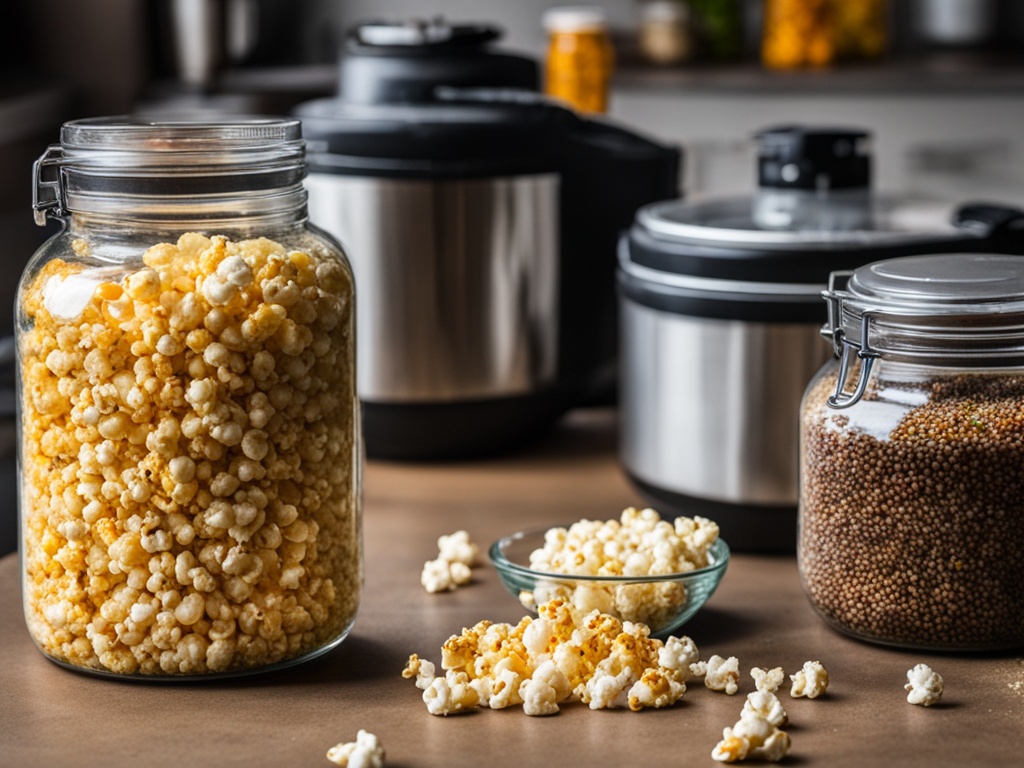
“A good mushroom substrate needs to have a moisture content of 50-70%.”
- Substrates need to contain a small amount of magnesium, potassium, calcium, sulfur, and phosphorus.
- The pH level of a substrate should be around 5-6.5 for optimal growth, with some mushrooms like oyster mushrooms tolerating up to pH 8.
- The substrate should be dense in woody, fibrous materials like lignin, cellulose, and hemicellulose, which contain a lot of carbon, the main food source for mycelium.
- Substrates should have 1 to 2 percent nitrogen, necessitating additional materials like sawdust or straw to reach this threshold.
Inoculation Process
The inoculation process is key to growing mushrooms successfully. It’s about putting mushroom spores or mycelium into a clean substrate. This starts the growth and spread of your fungi. Let’s look at how to set up a still air box and inoculate your jars right.
Setting Up a Still Air Box
Creating a still air box is vital for a clean work area during inoculation. It keeps out airborne germs that could harm your mushrooms. Begin by cutting big holes in a clear plastic box for easy access while keeping the air clean.
Before you start, clean the inside of the still air box and your workspace with a disinfectant. This careful prep helps your mushroom spores or liquid culture grow well, without getting contaminated.
Inoculating the Jars with Spores
With your still air box ready, it’s time to fill the jars with substrate. Remove the foil lids and use a clean syringe to put about 2 milliliters of spores into each jar. Put the spores on the jar’s side to help them spread out evenly.
Make sure to sterilize the syringe needle with a lighter between jars to avoid spreading germs. After adding the spores, seal the jar with tape to keep it clean.
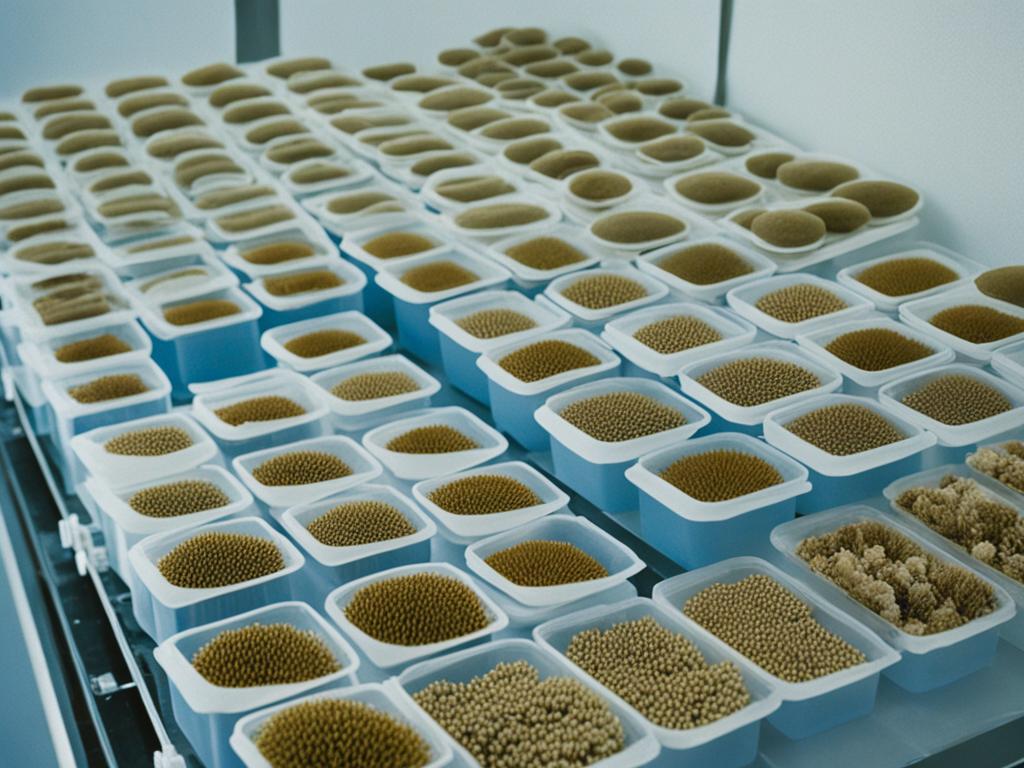
“The key to successful mushroom cultivation lies in maintaining a meticulously sterile work environment during the inoculation process. By setting up a still air box and carefully introducing the spores, you’re giving your mushrooms the best chance to thrive.”
Now that your jars are filled and sealed, it’s time for the next step. Keep following your mushroom growing journey!
Incubation and Colonization
After you put mushroom spores in your jars, it’s time to make the perfect place for the mycelium to grow. The mycelium, the fungus’s growing part, needs certain conditions to spread in your jars.
Start by putting the jars in a dark place with a steady temperature of about 73°F. This temperature, between 60°-75°F, is best for the mycelium to grow. Over 2 to 5 weeks, you’ll see the white, thread-like mycelium cover the substrate, a process called colonization.
Keeping the right conditions is important during this time. The mycelium likes high humidity, between 90-100%. Make sure the jars are sealed to keep moisture in but have some air to avoid CO2 buildup. This balance helps the mycelium grow well.
Watch the jars for any signs of contamination, like color changes or odd growth. Contamination can ruin your mushroom growing, so stay alert during this key time.
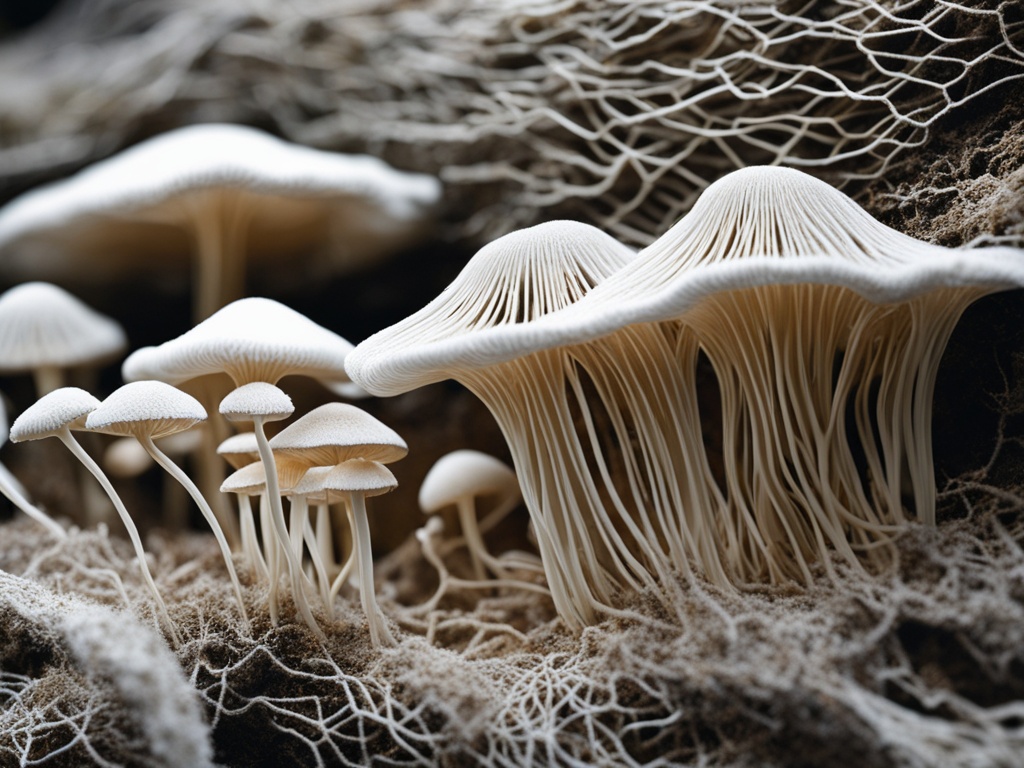
With the right conditions and patience, the mycelium will fully cover the substrate. This prepares you for the next step – growing mushrooms. Stay tuned for more on spotting contamination and the fun of growing mushrooms from spores.
Monitoring for Contamination
As a mushroom grower, I know it’s key to watch for contamination signs. I check my jars every day for green mold or color changes. If I see any, I quickly remove and throw away the jar to stop the problem from spreading. Keeping everything clean and sterile is vital for growing mushrooms.
Mushroom contamination often comes from Trichoderma harzianum, a green mold that can take over fast. Neurospora crassa, or orange bread mold, can also cause big problems, appearing in just 8-12 hours. It’s important to spot contaminants like “wet spot” or “sour rot” bacteria too, as they can make mushrooms dangerous to eat.
To fix these problems, soaking and cooking grains before sterilizing can help get rid of spores and bacteria. I also watch for cobweb mold (Hypomyces rosellus), which can be hard to see at first.
| Contaminant | Description | Impact |
|---|---|---|
| Trichoderma harzianum | Persistent green mold | Quickly overtakes mushroom cakes |
| Neurospora crassa | Orange bread mold | Can ruin mushroom operations in 8-12 hours |
| “Wet spot” or “Sour rot” | Bacterial contamination | Produces toxic compounds that make mushrooms unsafe |
| Cobweb mold (Hypomyces rosellus) | Distinct three-dimensional growth pattern | Can be challenging to detect initially |
By being careful, keeping my workspace clean, and sterilizing properly, I’ve cut down on microbial contamination in my mushrooms. Watching closely and acting fast is key to a good and safe harvest.
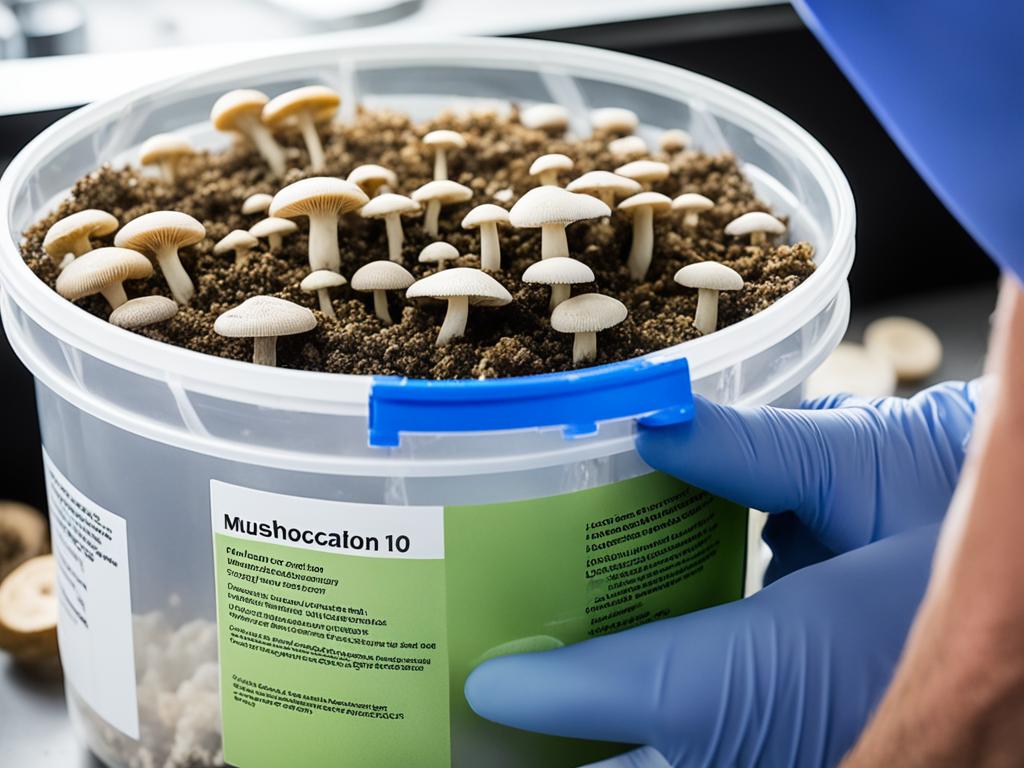
How to Grow Mushrooms from Mushrooms?
Growing mushrooms from existing mushroom material is a great way to keep your fungi supply going. You can clone your favorite strains using the mycelium from harvested mushrooms. This method is efficient and lets you keep the unique traits of the mushrooms you like.
Start with mushroom end pieces that are a quarter-inch (6 mm) or less. The best temperature for growing them is 65 to 75 degrees Fahrenheit (18-23 Celsius). You can harvest your mushrooms in about 19 days once the mycelium is ready.
Keeping the growing area damp and dark is crucial for mushroom growth. This environment helps the mycelium grow strong and form a network that produces mushrooms. Waiting two to four weeks for the mycelium to fruit is important.
Cloning wild mushrooms is another way to get unique strains. Take tissue from the mushroom’s stem, gills, or butt and grow it on an agar plate. This method is popular with commercial growers because it’s more reliable than using spores.
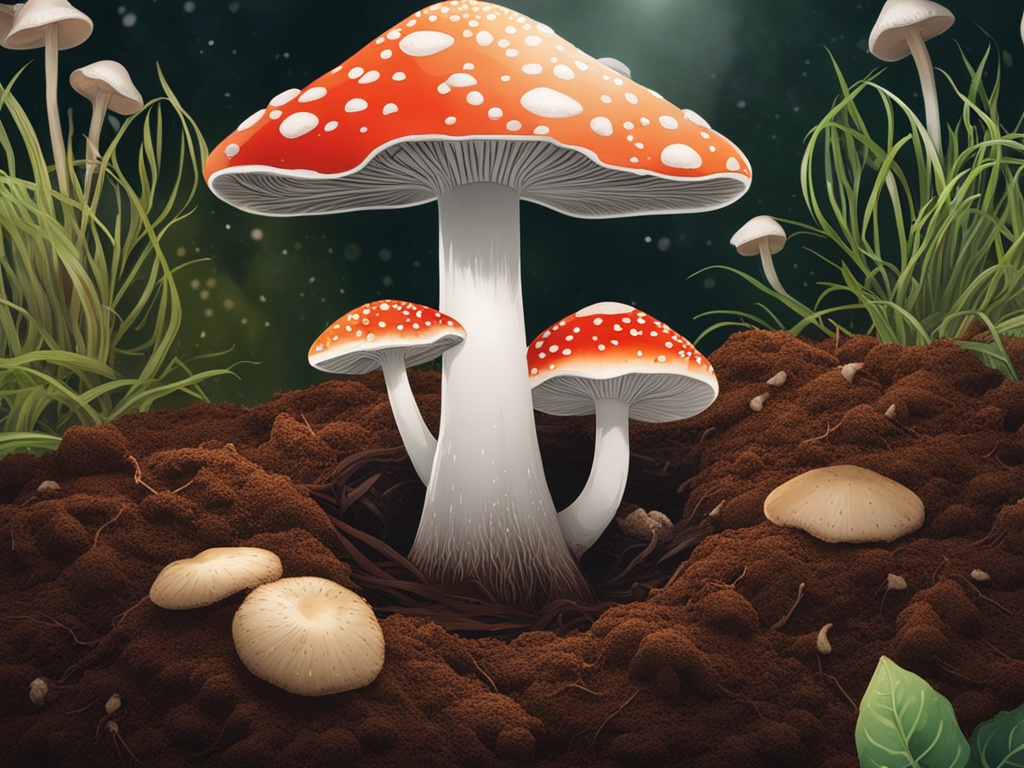
Growing mushrooms from store-bought ends or your own finds is rewarding. The process of mushroom propagation is sustainable and lets you enjoy the tasty world of mushroom cultivation. With patience and the right methods, you can grow your favorite mushrooms at home.
Determine Your Needs
Before starting your mushroom growing journey, think about the type of mushrooms you want to grow and the best way to grow them. Consider the mushroom’s favorite food, growing conditions, and what you can provide. This helps you make a smart choice for success.
Looking at mushroom variety selection, each type has its own traits and benefits. For example, oyster mushrooms are tough and can beat other fungi. Blue, yellow, and pink oyster mushrooms like different temperatures. Agaricus mushrooms, like portabella and button, do well on certain foods, while shiitake mushrooms love white oak logs.
Choosing the right growing methods is key. Some methods, like the bolt or totem method for shiitake, need certain foods and conditions. The bag method is good for beginners with little space. Knowing the cultivation requirements of each mushroom and method helps you pick the best one for you.
“Mushrooms are not photosynthetic, so they get their food from pre-existing material, making them perfect for city gardeners with little sunlight.”
Think about what mushrooms you like, how you want to grow them, and what they need. This will help you start a successful mushroom growing journey. With the right info and planning, you’ll be on your way to a great harvest of tasty mushrooms.
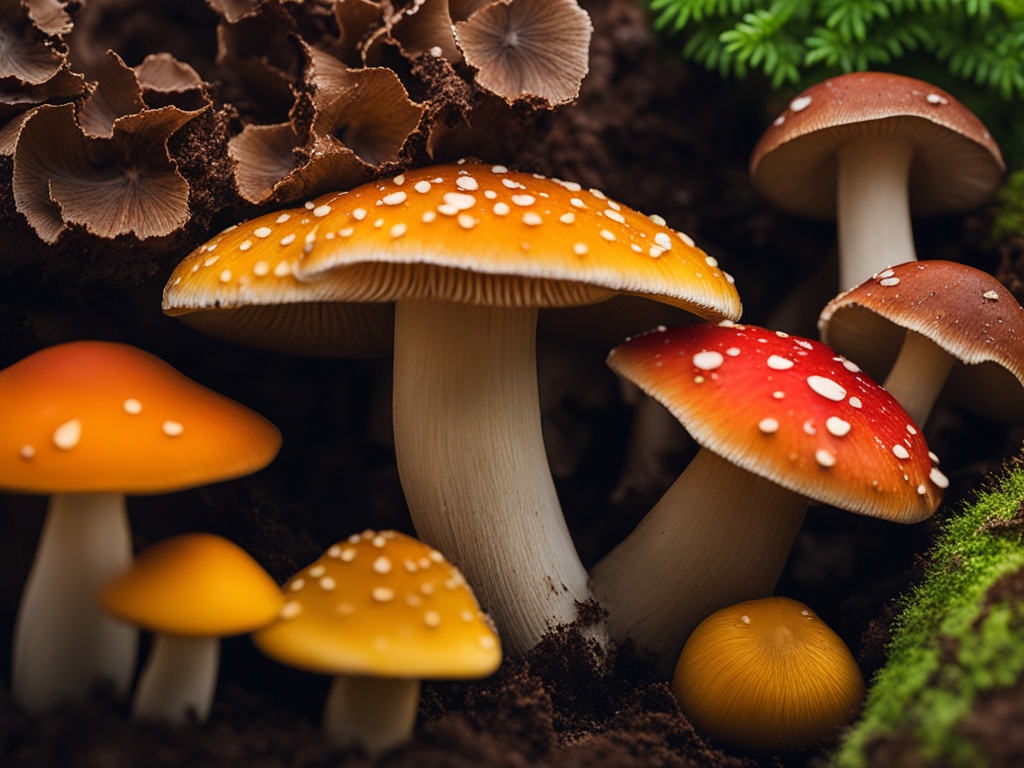
| Mushroom Variety | Preferred Substrate | Growing Conditions |
|---|---|---|
| Oyster Mushrooms | Wide range of substrates | Hardy, can outcompete other fungi |
| Blue Oyster Mushrooms | Wide range of substrates | Thrive in cool temperatures of fall and winter |
| Yellow Oyster Mushrooms | Wide range of substrates | Prefer the warmer weather of late spring |
| Pink Oyster Mushrooms | Wide range of substrates | Can withstand the heat of summer |
| Agaricus Mushrooms (Portabella, Button) | Well-rotted horse manure or synthetic compost | Require specific temperature and moisture levels |
| Shiitake Mushrooms | White oak logs | Thrive in cool, moist environments |
Supplies and Preparation
When you start growing mushrooms, having the right supplies and a clean workspace is key. You’ll need things like a pressure cooker, grow bags, and substrate materials. It’s also vital to sanitize your area and tools to avoid contamination and grow healthy mushrooms.
Creating a clean space is the first step to growing mushrooms well. Begin by cleaning and sterilizing your work area and tools. Use a disinfectant to wipe down surfaces. Always wash your hands before touching any materials.
| Essential Supplies | Purpose |
|---|---|
| Pressure Cooker | Sterilize substrate materials and equipment |
| Wide-Mouth Jars | Contain the substrate and mushroom growth |
| Still Air Box | Provide a sterile techniques environment for inoculation |
| Mushroom Spawn | Introduce the mycelium to start the growing process |
| Substrate Materials | Provide the necessary nutrients for mushroom growth |
By keeping your workspace and tools clean, you’ll make a great place for mushrooms to grow. This helps avoid contamination and boosts your chances of a good harvest.
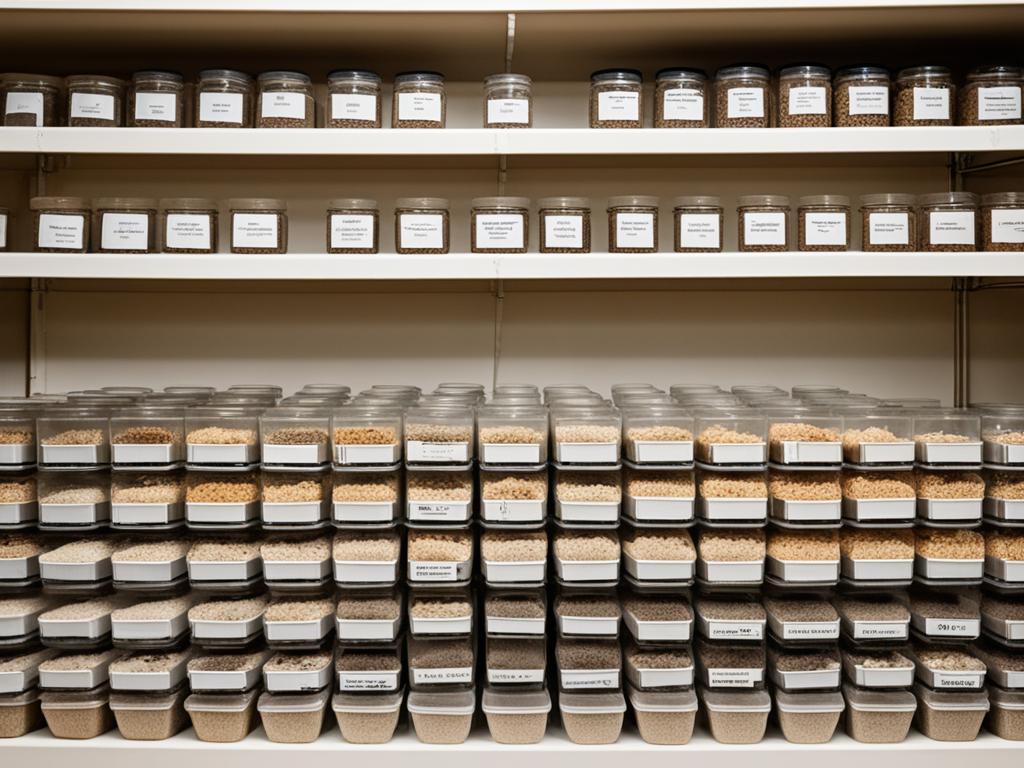
Inoculation Techniques
Starting your mushroom growing journey means a key step: inoculation. This is when you put mushroom spores or spawn into the substrate. It’s vital for a good harvest. Using a spore syringe or other methods, make sure to sterilize to prevent contamination and ensure success.
To use a spore syringe, first clean the syringe well. Dip it in boiling water or a sterilizing solution to kill germs. After sterilizing, put the mushroom spores into your substrate as the instructions suggest.
When you inoculate, timing is everything. The rate at which you add spawn affects how fast the mushrooms grow and how well they do. Adding the right amount is key to avoid slow growth or wasting resources.
“Proper inoculation is the foundation for a thriving mushroom crop. Careful attention to sterile techniques and inoculation rates can make all the difference in your growing journey.”
Whether you’re using logs, beds, or containers, knowing when to inoculate is crucial. Plan your inoculation well to increase your chances of a big harvest.
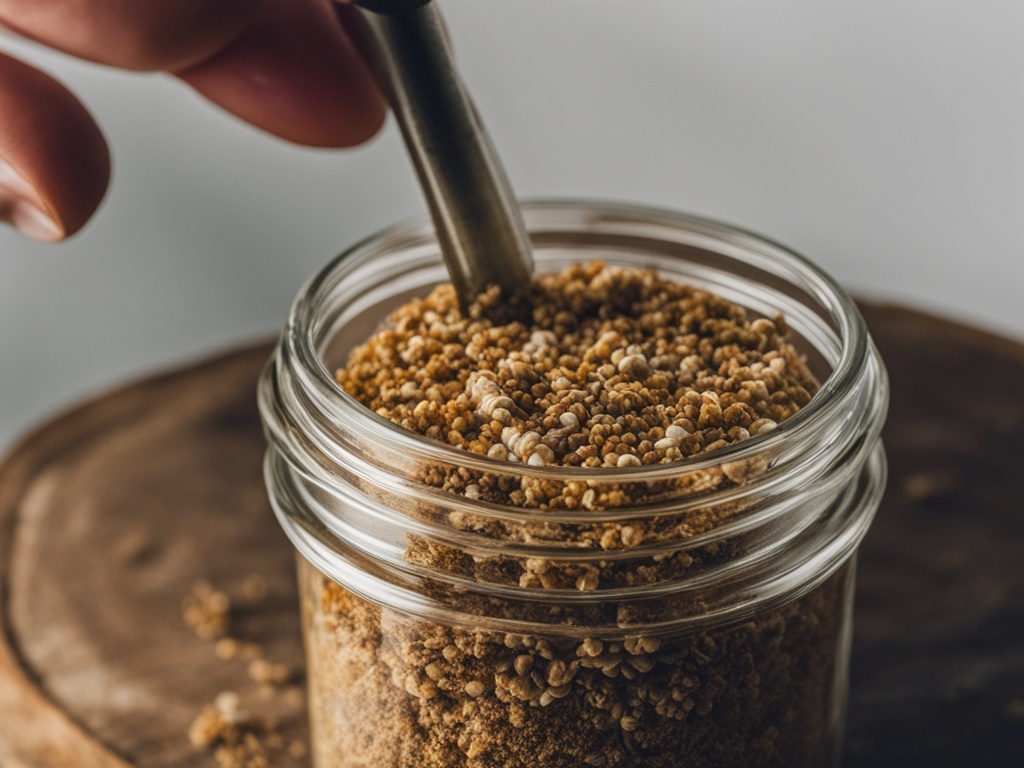
In large-scale mushroom farming, special tools like steam chambers and HEPA filters are key. They keep the area clean during inoculation. This ensures mushrooms grow well and consistently.
Improving your inoculation skills is a big part of growing mushrooms. By getting good at sterilization and precise inoculation, you’ll grow more mushrooms and enjoy a tasty harvest.
Colonization Phase
The colonization phase is key in growing mushrooms. Here, the mycelium spreads and grows, creating a white mat. It’s vital to keep the right conditions for a good harvest.
Ideal Conditions for Colonization
The best temperature for mycelium growth is 70-80°F. Keeping humidity at 90-95% is also important. A dark place is best, as mycelium grows well in low light. Watch for contamination and adjust the environment as needed.
Breaking Up and Mixing the Grain
At times, you’ll need to mix the colonized substrate with more substrate. This is done when the mycelium covers 1/3 to 2/3 of the substrate. Mix gently to avoid harming the mycelium. Let it spread fully through the mixture.
| Metric | Value |
|---|---|
| Colonization Phase Duration | 3 to 6 weeks |
| Ideal Temperature Range | 72°F to 80°F |
| Ideal Humidity Range | 90% to 95% |
| Mixing Substrate Colonization | 1/3 to 2/3 colonization |
By keeping the right conditions and managing the substrate well, you can prepare for a great mushroom harvest.
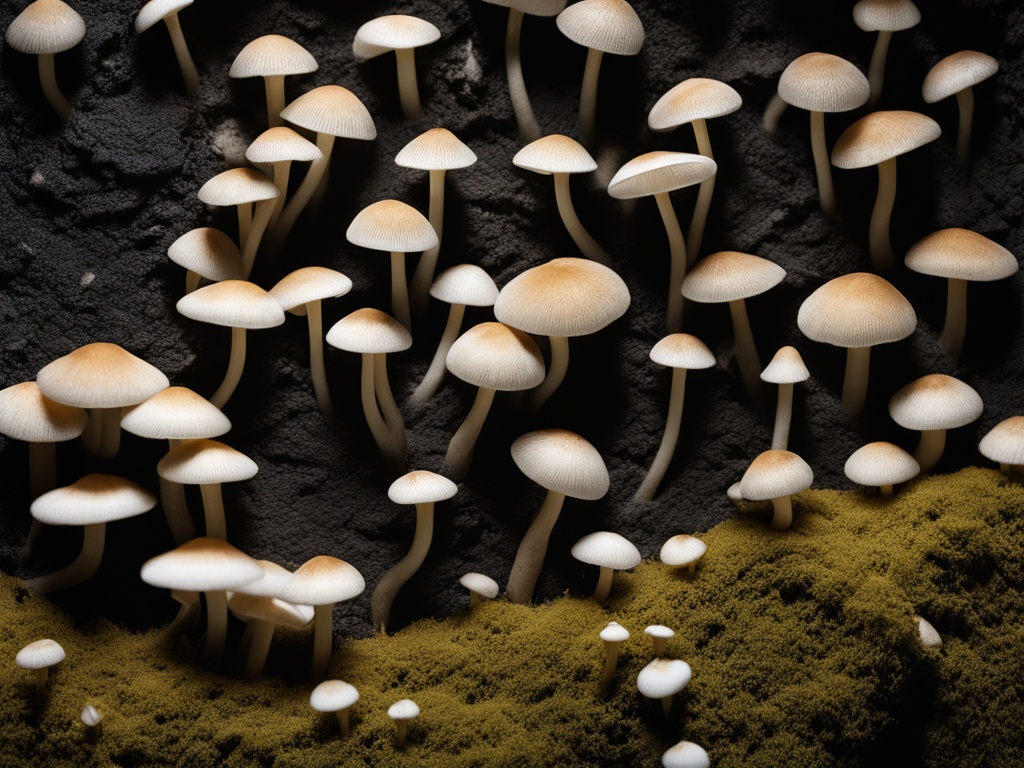
Fruiting Phase
The fruiting phase is a key moment in growing mushrooms. It’s when the mushrooms start to grow and develop their tasty caps. This happens when the mycelium gets the right amount of light, oxygen, and conditions.
Introducing Light and Oxygen
To start the fruiting process, give your mushrooms a 12/12 light cycle. They should get 4-6 hours of indirect light each day. Also, make sure there’s good air flow to keep oxygen levels up. These conditions tell the mycelium it’s time to produce mushrooms.
Fruiting Methods
There are different ways to make mushrooms fruit. If you’re using the bag method, open the grow bag to let in light and air. With the monotub method, move the colonized substrate to a place where it can fruit.
Follow the steps for your growing method to make the best conditions for your mushrooms. This might mean keeping the temperature, humidity, and airflow just right.
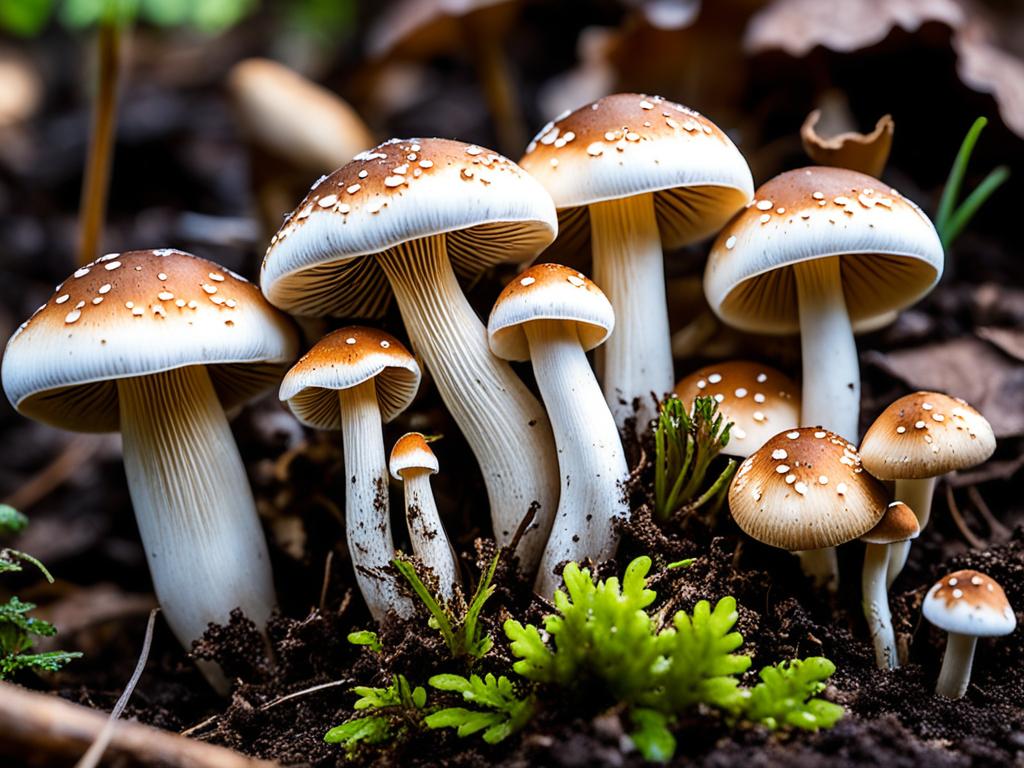
Keep an eye on your mushrooms and give them what they need. This way, you can get a great harvest during the fruiting phase. Remember, paying attention and being patient are important for success.
Mushroom Growing Methods
There are several ways to grow mushrooms at home. From the bolt method to the totem method, each has its own benefits. Let’s look at these methods to see which one suits you best.
The Bolt Method
The bolt method is great for growing mushrooms outside. You use fresh logs and fill them with mushroom spawn. Then, you seal the holes with wax. When the conditions are right, mushrooms will grow.
This method is perfect for shiitake and oyster mushrooms in the outdoors.
The Totem Method
The totem method is efficient with logs. You stack log slices with sawdust in between. Then, you secure it all together for more mushroom harvests. It’s ideal for layered log cultivation of lion’s mane and reishi mushrooms.
The Bag Method
The bag method is easy for beginners. You use a pre-inoculated substrate in a plastic bag. The mycelium grows through the plastic, and you cut holes for the mushrooms to come out.
This method is perfect for easy mushroom growing. It works well for oyster and shiitake mushrooms.
Choosing between the bolt method, the totem method, or the bag method depends on your space and preferences. Each method has its own benefits and challenges. Understanding these can help you pick the best one for you.
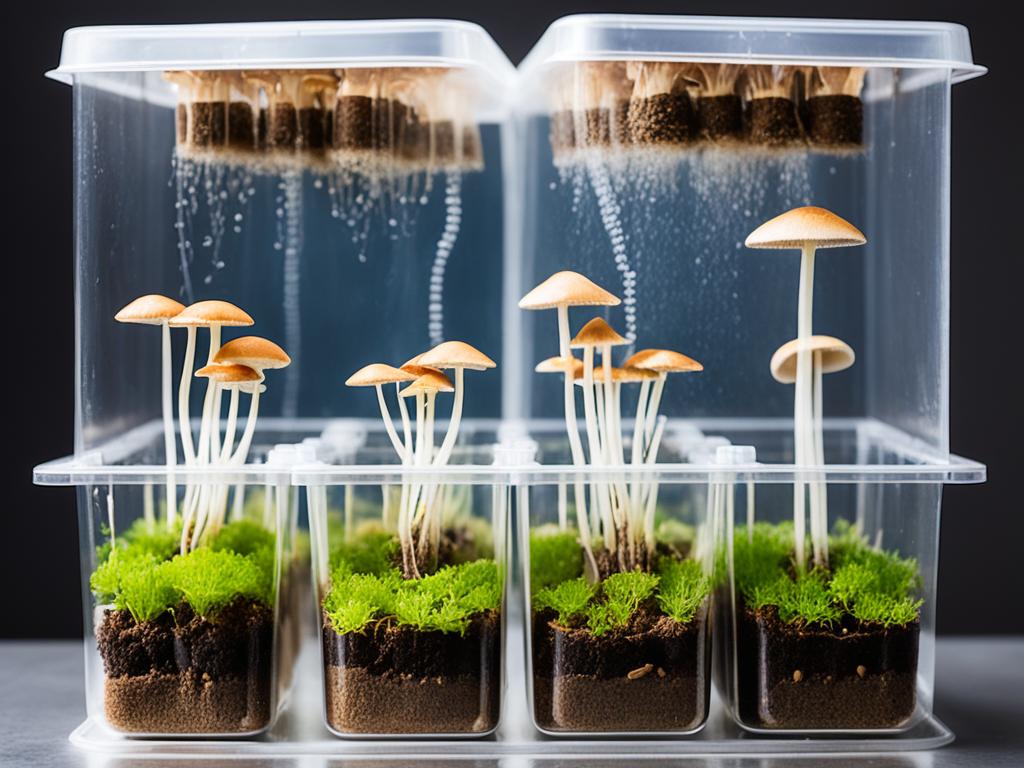
Recommended Mushroom Varieties
For beginners, I suggest starting with oyster mushrooms (Pleurotus ostreatus), lion’s mane (Hericium erinaceus), and shiitake (Lentinula edodes). These mushrooms are easy to grow and offer great taste and health benefits.
Oyster mushrooms are great for beginners. They grow well on many things like straw, sawdust, and even waste. They like temperatures between 45-77°F and can be ready to eat in 2-3 weeks indoors.
Lion’s mane mushrooms (Hericium erinaceus) are perfect for new growers. They taste like seafood and look like a white pom-pom. You can grow them on sawdust or grain-based substrates. They take about 6-10 weeks to produce mushrooms.
Shiitake mushrooms (Lentinula edodes) are loved for their taste and easy growth. They grow on logs or sawdust blocks. It takes 6-12 months on logs and 7-10 weeks on blocks to get mushrooms.
Starting with oyster mushrooms, lion’s mane, and shiitake can help you succeed in growing your own mushrooms at home.
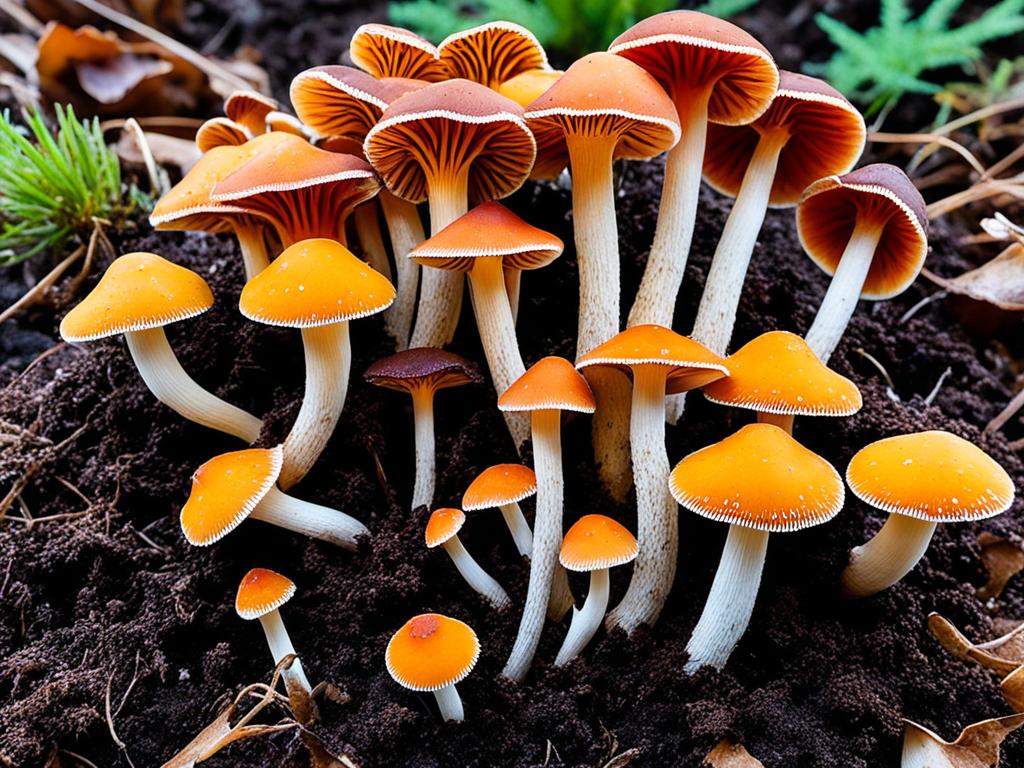
“Mushroom cultivation is a rewarding and fascinating hobby that can provide you with a steady supply of delicious, nutritious produce right from your own home.”
Conclusion
Growing mushrooms from mushrooms is rewarding for both beginners and experts. This guide covers everything from getting the right gear to growing your mushrooms. You’ll learn to enjoy the taste and freshness of mushrooms you grow yourself. Choosing the bolt, totem, or bag method makes it fun.
It’s important to pay attention to details when growing mushrooms. The right soil, temperature, and humidity are key for growth. Keeping an eye on your grow room and adjusting things as needed is crucial. Using a system like Bifarm’s Bloom Matrix can make things easier by controlling the environment automatically.
This article gives you the knowledge to start your mushroom growing journey. You can explore the health benefits of some mushrooms or just enjoy their taste. So, get ready, get your hands dirty, and start growing your own mushrooms today!
FAQ
What equipment is needed to grow mushrooms from mushrooms?
You’ll need a pressure cooker, wide-mouth jars, and polyfill for gas exchange. Also, scotch tape, a drill, and hole saw are necessary. Don’t forget latex gloves, rubbing alcohol, a lighter, and aluminum foil.
How do I prepare the substrate for growing mushrooms?
Start by soaking and partially cooking popcorn kernels. Then, fill jars with this mixture and pressure cook them to sterilize the substrate.
What is the inoculation process for growing mushrooms?
First, set up a still air box for a sterile environment. Next, use a syringe to inject mushroom spores into the sterilized substrate in the jars.
How do I monitor for contamination during the mushroom growing process?
Check the jars daily for signs of contamination like green mold or discoloration. If you find any, isolate and discard those jars right away. This stops unwanted fungi or bacteria from spreading.
What are some recommended mushroom varieties for beginners?
Beginners should try growing oyster mushrooms (Pleurotus ostreatus), lion’s mane (Hericium erinaceus), and shiitake (Lentinula edodes). They’re easy to grow and have great taste and health benefits.
